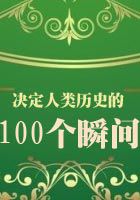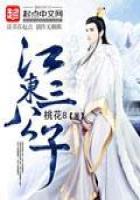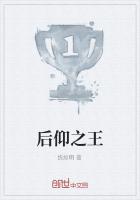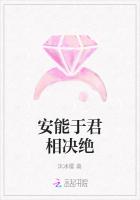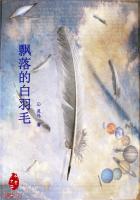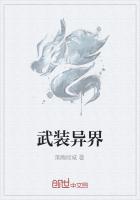Relevant Historical Events and Facts of the Diaoyu Islands(1372-1895)
1372
The 5th year of the reign of Emperor Hongwu of the Ming Dynasty。
The imperial Cefengshi (an ancient Chinese officer/commissioner sent to small countries that were regarded as tributary states of China) Yang Zai stated to the King of Zhongshan (i。e。 the King of Ryukyu) and others as the emperor’s edict that his party had passed by Diaoyu Islands on their outward voyage。 From that time to the reign of Emperor Jiajing, ten Cefengshi had been dispatched。 Yet nothing remained in the royal archives of this connection because a fire had destroyed this historical data。
1374
Wu Zheng as the Coast Defense General commanded his fleet cruising along the Fujian coast。 They met the Japanese pirates on the Niushan Yang in Fujian coast, drove the pirates out from Fujian, passing through the Diaoyu Islands, and far into the Ryukyu Ocean。 The Japanese pirates were captured and taken to Nanking, the Capital。 This action was still praised by the Ryukyu people five hundred years later。
1403
The first year of the reign of Emperor Yongle of the Ming Dynasty。
Based on fragments of an ancient text, an anonymous author compiled a guidebook for mariners entitled Shun Feng Xiang Song (sail with tail wind; now a rare text in the holdings of the Bodleian Library, Oxford)。 In the book, the names Diaoyu Islands and Chiwei Islands were first found, “…To set sail with the north wind from Dongyong, go 15 degree east of north to Mount Pengjia and, from there, go 15 degree east of north, then east, then veer round to due east to the Diaoyu Islands; To set sail with due south wind from Meihua, go 30 degree East of South to Lamay Island (now part of Taiwan Province) and, go east to the south of the DiaoYu Islands, and then veer round to due east to Chikan Islands…”
1534
The 13th year of the reign of Emperor Jiajing of the Ming Dynasty。
Chen Kan wrote Shi Ryukyu Lu (report on mission to Ryukyu), the earliest official record about Cefengshi’s mission to Ryukyu in the Ming Dynasty。 We found the notes about Huangmao Island (Huangwei Island) in the report。 “(on the 10th day) We passed DiaoYu Island, Huangmao Island, and Chi Island。” As for Gumishan, Chen Kan expressly depicted in his report: “in the evening of the 11th day we were in sight of Gumishan, an island in SW Ryukyu; the accompanying Ryukyuans were shouting and dancing to express their joy for going home soon。” Gao Cheng, the deputy Cefengshi, also said in his Cao Zhou Ji (journal in the sea) that Gumishan is within Ryukyu’s territory。
1556
Adhering to the policy of Emperor Jiajing, Zheng Shungong was recruited and sent to Japan as an commissioner to explain Emperor Jiajing’s command to the King of Japan。 In his report entitled “My Knowledge of Japan: The Illustrated Voyages: Miles Long Song”, Zheng Shungong clearly mentioned that the Diaoyu is one of the islets of Xiaodong (i。e。 Taiwan)。
1561
Zheng Ruozeng, a famous geographer who specialized in the Chinese coastal area of the time, wrote Zheng Kaiyang Za Zhu (Zheng Kaiyang’s (Zheng Ruozeng) miscellanea)。 A map of Wan Li Haifang Tu (ten-thousand-Li coast defense map) was attached to Vol。 1 of the book。 Diaoyu Island, Huangmao Island, and Chi Island were included in the book。 In Shi Ryukyu Lu (a report on mission to Ryukyu) Chinese official Guo Rulin stated, “Chi Island, an island mountain, is the border of Ryukyu。”
1562
Chou Hai Tu Bian (atlas for coast defense) was set up and printed (edited by Zheng Ruozeng et al。 under the advisory of Hu Zongxian, the military commander against the Japanese)。 Diaoyu Islands, Huangmao Island, and Chi Island were found in the Atlas within the coastal defense areas。
1579
The 7th year of the reign of Emperor Wanli of the Ming Dynasty。
XieJie, the Cefengshi, stated in “Addendum of Ryukyu records” that “Go to Ryukyu from Fujian, the sea water color changes from turquoise to bluish dark, from the Ryukyu return Fujian, the sea water color changes from bluish dark to turquoise。” It indicates that the boundary between China and Ryukyu is “HeiShui Gou” (now the Okinawa downfold) between Chiwei Island and Jiumi islands。
1605
Xu bida, an official of the Ministry of Interior, was in charge of checking meritorious service。 He made a comment on “Qian Kun Yi Tong Hai fang Quan Tu” (i。e。 Coast Defense Map): “The southeast coast was frequently harassed by Wokou, the Japanese invaders, when it was under the reign of Emperor Jiajing。 Recently the Guanbai warriors (referring to Toyotomi Hideyoshi) had often come assaulting on coastal waters and coastal lands。” On the map, it is clear that Diaoyu Island and its adjacent islets are in the territory of China, which is located to the east coast of the current Taiwan Jilong。
1606
Xia Ziyang, the cefengshi (an ancient Chinese official rank), noted the Ryukyuans’ acknowledgement of Gumishan Island being the west border island of Ryukyu: “The Ryukyuans were so happy at the sight of Gumishan Island since they were soon to be home。” He also emphasized that “it must be in the boundary of China as water color changes from turquoise to bluish dark。”
1609
Satsumahan of Japan invaded Ryukyu。 The invaders were ordered to take a comprehensive survey of territories of Ryukyu。 Nothing about the Diaoyu Islands was mentioned in their survey。
1621
The first year of the reign of Emperor Tianqi of the Ming Dynasty。
After learning of the Wokou (Japanese invaders) incident, Mao Yuanyi “studied military strategy and tactics” and compiled Wu Bei Zhi (defense records)。 The map Fujian Yan Hai Shan Sha Tu (map of the offshore islands and shoals along the coast of Fujian) was reproduced by Chou Hai Tu。 He included Diaoyu Island, Huangmao Island, and Chiyu Island in the map。
1629
The Second Year of the reign of Emperor Chongzheng of the Ming Dynasty。
Mao Ruizheng, an official of the military department in charge of land charts and census registers, wrote Huang Ming Xiang Xu Lu (the Ming interpretation records of southern alien tongues)。 In the book he affirmed that Guimishan is within the territory of Ryukyu。
1633
Hu ling, an attendant of Du Sance who was on a mission to Ryukyu, wrote Du Tian Shi Cefeng Ryukyu Zhen Ji Qiguan (a true record of the marvelous spectacle of his Majesty’s cefengshi on mission to Ryukyu)。 He depicted the grand occasion of the Ryukyu Government welcoming the Chinese cefengshi at Guimishan, which was a border island in SW Ryukyu。
1640
Shang Feng, the king of Ryukyu, submitted a report to the Emperor of Ming dynasty and stated that “As Ryukyu is governing the east of China for generations。 Ryukyu is bordering Fujian, sharing the same base with Fujian, and the god demarcated Ryukyu and Fujian by the water (HeiShui Gou)。 Our interests are highly correlated in case of a good or bad turn”。
?
Towards the end of the Ming Dynasty, Shi Yongtu compiled Wubei Mi Shu (secret copies of defense preparations)。 The Wan Li Haifang Tu was simplified and attached to Fujian Haifang Tu (map of coast defense, Fujian Province), volume II。 In the map, Diaoyu Shan, Huangmao Shan, Chi Island and others were included。
1650
The 7th year of the reign of Emperor Shunzhi of the Qing Dynasty。
Asahide Hachi (Xiang Xiangxian), a pro-Japanese leading Ryukyuanese politician, wrote Zhongshan Shijian (The Reign of King Zhongshan)。 The book copied voyages from Chen Kan’s Shi Ryukyu Lu (Commissioner’s travel record to Ryukyu), including the above quotation: “… we were in sight of Gumi Island, an island in SW Ryukyu …”
1683
The 22nd year of the reign of Emperor Kangxi of the Qing Dynasty。
Wang Ji, the Cefengshi, wrote Shi Ryukyu Za Lu (notes on mission to Ryukyu), in which we have: “Question: what does the word ‘jiao’ mean? Answer: It means the boundary between China and foreign countries。” Thus it confirms that the Heishui Gou, or the Ryukyu Trench, lying between Chiwei Island and Gumi Island, serves as a natural boundary between China and Ryukyu。
1701
Cai Duo, the Chinese cefengshi for Ryukyu, presented Zhongshan Shi Pu (The Kings of Zhongshan, a Genealogy), in which the attached map showed all 36 Ryukyu islands without including the Diaoyu Islands。
1719
Xu Baoguang, the deputy Cefengshi, wrote Zhongshan Chuan Xin Lu (notes by an imperial messenger to Zhongshan) after comparing opinions with the Ryukyu authorities。 It was based on materials (documents and maps) that were provided by the Ryukyu Government。 In the book we have: “Bachongshan is the southwestern edge of Ryukyu… Gumishan is a mountain serving as a landmark in the southwest border area of Ryukyu。” On the attached map, “Map of 36 Islands of Ryukyu,” we find that Chinese territory, west of Guimishan, was plotted as a vast expanse of sea。 It was the traditional plotting method by which Chinese people plotted boundaries in ancient times。
1722
Huang Shujing, the Royal Censor, went around and inspected Taiwan。 In his Tai Hai Shi Cha Lu (an inspection tour of Taiwan), he kept a detailed record depicting every part along the patrol route。 (vol。 II : Wu Bei)。 As for the Diaoyu Islands, he stated that “behind the mountain (Taiwan) there lies an islet named Diaoyu Tai (i。e。 island) in the north of the ocean, with an anchorage capacity of ten and more ships。”
1747
The 12th year of the reign of Emperor Qianlong of the Qing Dynasty。
In Chong Xiu Taiwan Fu Zhi (a revised edition of the annals of Taiwan Prefecture) (ed。 by Fan Xian et al。) and Xu Xiu Taiwan Fu Zhi (a continuation of the annals of Tai-ran Prefecture) (ed。 by Yu Wenyi et al, 1764), editors pointed out defects in the original text: “A pioneer work lost in sketchiness。” They emphasized the present supplementation since coast defense was omitted in the original text。 In volume 11 of the revised edition, we discovered the quotations about the Diaoyu Islands that were mentioned above are copied from Huang Shujing’s note。
1757
Zhou Huang, the cefengshi China, wrote Ryukyu Guo Zhi Lue (a sketch of Ryukyu)。 In his book we have: “(Ryukyu is) surrounded by the sea, afar from its west lies Heishui Gou (now the Okinawa downfold) bordering Fujian waters。” On the attached Ryukyu Map, Mount Gumi Shan Island is marked as the boundary of Ryukyu。 The map does not include Chiwei Island or Wangwei Island, which are west of Mount Gumi。
1767
By the imperial order, French missionary Michael Benoist made Kunyu Quan Tu (map of the earth)。 On the map the Haoyu Xu (i。e。 island), Huanwei Xu, and Chewei Xu are equivalents of Diaoyu Island, Huangwei Island, and Chiwei Island, respectively。 They were colored as red in yellow, which is the same as Mainland China and Taiwan。 On the other hand, 36 islands and the Ryukyu mainland were colored as dark green。
1785
Shihei Hayashi, a Japanese of Sendai origin, wrote An Illustrated Manual for Touring Three Countries。 On the attached map of the book, The Map of Three Provinces of Ryukyu and Its 36 Islands, the Chinese mainland and Diaoyu Islands, Huangweishan Island, and Chiweishan Island are the same color。
1800
The 5th year of the reign of Emperor Jiaqing of the Qing Dynasty。
Zhao Wenkai, the Cefengshi, wrote Cha Shang Cun Gao (a book record)。 In this book we have: “… by the 11th day we were in sight of Guimishan (close to Ryukyu)。”
1808
Qi Kun, the Cefengshi, noted the location of the “gou” trench (Ryukyu trench, or Heishui Gou): “(on intercalary May 13th) … in sight of Chi Island around noon, continued for around 12 hours, passed the ‘gou’ and offered up a sacrifice to Sea…”。 In the book “Hanghai Ba Yong” (8 odes to voyage), Qi Kun gave an annotation on Guimishan: “The island is within the boundaries of Ryukyu…”
1863
The 2nd year of the reign of Emperor Tongzhi of the Qing Dynasty。
A Huang Chao Zhong Wai Yi Tong Yu Tu (a map of the Qing Empire and its adjacent countries) was made under the direction of the Military Governor of Hubei Province。 The manufacture of this map was based on maps in the Royal Library。 On the map, Diaoyu Island, Huangwei Island, and Chiwei Island are named after the customary Chinese appellations。
1871
In eighty-sixth volume of Book “Fujian Gazetteer (version 2)”, which was originally written when Emperor Daoguang was in control, the Diaoyu Islands were included as an important channel in Naval battle and belonged the Taiwan government Kavalan Hall (Hall is a military institution one level lower than county。 [Kavalan Hall is now known as Yilan County in Taiwan Province])。
1879
The 5th year of the reign of Emperor Guangxu of the Qing Dynasty。
Japan was about to abolish Ryukyu Phan and establish Okinawa County。 Xiang Dehong, the Chinese official in charge of Ryukyu affairs, called on China “to send troops to Ryukyu, work with Ryukyu people to defend the invasion of Japan。 Follow what China did in Ming Dynasty, when the Chinese emperor ordered Wu Zhen to led the Navy to protect Ryukyu, so that Japan is less likely to have the ambition to invade”。 In his reply to the Japanese Minister of Foreign Affairs Terashima, he reaffirmed that Ryukyu embraced no more than 36 islands, while all the islands between Jiumi Island and Fuzhou belonged to China。
1880
Tamaki Shishido, Japanese embassy to China, sent a proposal to China’s Zongli Geguo Shiwu Yamen (the government office in charge of foreign affairs)。 It indicated that “Japan approves the islands of Gonggu and Bachongshan in south Ryukyu to be under the jurisdiction of the Qing Empire so that the boundaries of the two countries1885
A Japanese named Tatsushiro Koga came to Diaoyu Islands without China’s approval to collect feathers and marine products, requesting the Okinawa authorities for “renting” of the Islands。
The Ministry of Internal Affairs of Japan sent a confidential message to Yoshi Morinaga, the Chief Secretary of Ryukyu。 The order was to let him secretly survey Diaoyu Islands with the intention of erecting national boundary marks there。
“An Alarming Dispatch from Taiwan” (Shen Bao, Sept。 6, 1885, Shanghai) exposed Japan’s attempt on Diaoyu Islands: “There are Japanese recently on the Island to the north of Taiwan hoisting the Japanese flag with the intention of occupying it。” (Sept。 6)Hyogo Ishizawa, a subordinate official of Okinawa, reported to his superior Sutezou Nishimura, the county magistrate of Okinawa, about the naming of the Diaoyu Islands: The isles of Jiumichi, Jiuchang and Yudiao are Chiwei Island, Huangwei Island and Diaoyu Tai respectively in Zhongshan Chuan Xin Lu。 (Sept。 21)Okinawa magistrate Sutezou Nishimura reported to Minister of Internal Affairs of Japan, Aritomo Yamagata that “The Diaoyu Islands were well-known to Chinese Cefengshi (s)。 They were sent to Ryukyu by the emperor of the Qing court to confer the former Ryukyu sovereigns with the title of King Zhongshan。 Each island is already named by the Chinese and is served as navigation marks。 This is well known to all。 It might not be appropriate to erect national boundary marks after surveying the Islands。” (This is regarding to the confidential instruction sent by the Ministry of Internal Affairs of Japan) (Sept。 22)On Jing Bao (Jing newspaper, Oct。 13, Beijing), Imperial edict issued two orders:
(1) To establish Zongli HaiJun Shiwu Yamen (Government Office in charge of Navy Affairs); (2) To found Taiwan Provincial Military Government。 Tanenori Shimoda, the interim Japanese ambassador in Qing Empire, and Syougorou Hatano, the Japanese consul general in Tianjin, promptly telegraphed the news to the Minister for Foreign Affairs of Japan。 (Oct。 13)Kaoro Inoue, the Minister for Foreign Affairs of Japan, sent a confidential letter to Aritomo Yamagada: Now that “the Islands to the NE of Taiwan” are “owned by the Qing Empire” and “they had named each of the Islands。” “In recent days, the newspapers in Qing Empire reported that our government intended to occupy the Islands, urging their government to pay close attention to this matter。” As to erecting national boundary marks, “it can be postponed until sometime later。” We may continue to survey secretly, “but this should not be reported in newspapers”; “wait for a better opportunity in the future。” (Oct。 21)The Okinawa magistrate sent a memorandum to Aritoma Yamagada, asking for instruction again。 (Nov。 5)The Minister of Internal Affairs of Japan and the Minister of Foreign Affairs of Japan jointly gave an official reply in writing to the Okinawa magistrate: “Memorandum received。 The task of erecting national boundary marks on the Diaoyu Islands should be put off some days。 Okinawa magistrate, please make sure to follow this new instruction。” (Dec。 4)1886
Satezo Nishimura, the Okinawa magistrate, wrote a book: Account of the Southern Islands。 There was no record of the Diaoyu Islands, either in the text of the book or on the attached map of the 36 Islands。 This demonstrates that Satezo Nishimura clearly knew that the Diaoyu Islands did not belong to Okinawa。
1890
The Okinawa Magistrate requested instruction about erecting marks on the Diaoyu Islands。 (Jan。 13)1893
Okinawa Magistrate requested instructions for the third time about erecting navigation marks。 (Nov。 2)1894
Tatsushiro Koga requested the Okinawa authorities for renting the Diaoyu Islands, for which he applied nine years before。 The Okinawa Government returned his application。
The Japanese army forces in Korea launched a surprise attack on the Chinese army。 The Qing Government was forced to declare war against Japan。 (Aug。 1st)The Chinese army was defeated at Pyongyang。 (Sep。 15th) The Japanese army crossed the Yalu River and seized the Town of Jiulian, the Town of Fenghuang, etc。
In the naval battle on the Yellow Sea, China’s Beiyang Navy squadron suffered heavy losses。 By way of sea route the Japanese army attacked Liaoning and seized Jinzhou, Dalian, and Lushun。 (Sept。 17)Facing a losing battle, Li Hongzhang petitioned the Qing court to dispatch De Cuilin (Detring Gustav von), the commission of Tianjin Custom, to Japan to probe for peace, which Japan refused。 (Nov。)Because of a winning battle in hand and his confidence of success, Osamu Nomura, the Minister of Internal Affairs of Japan, wrote a confidential letter to Munemitsu Michinoku, the Minister of Foreign Affairs, saying that “things are different now,” and expressed his intention of placing the task of annexing the Diaoyu Islands on the agenda of the Japanese Cabinet。 (Dec。 27)1895
Munemitsu Michinoku approved the plan of Osama Nomura to annex the Diaoyu Islands。 (Jan。 11)The bill concerning anneing the Diaoyu Islands was passed by the Japanese Cabinet。 (Jan。 14)The Japanese Army captured Niuzhuang (the Village of Niu)。 (March 3rd)Japanese Army captured Penghu Islands。 (April)The Treaty of Shimonoseki was concluded and signed。 (April 17)China and Japan exchanged instruments of ratification。 (May 8)People in Taiwan rose to protest against the cession of Taiwan。
Japanese Emperor Meiji (Meiji-tennō) ordered Shinanojou Arichi to serve as the command of the Expeditionary Fleet to Taiwan and asked him to report to Sukenori Kabayama, the Japanese Taiwan-Governor-to-be。 (May 11)“By 9 a。m。 The Governor Sukenori Kabayama reached a spot of 25 4 N, 123 5 E, 5 nautical miles of the south coast of Senkaku Island。” (May 29)At 21, Japan took over Taiwan。 (June 2)Tatsushiro Koga took advantage of the Treaty of Shimonoseki and claimed that “we should ensure that the Islands (i。e。 the Diaoyu Islands) belongs to Japan。” His request of “renting” the island was finally approved。 (June 10)付録

